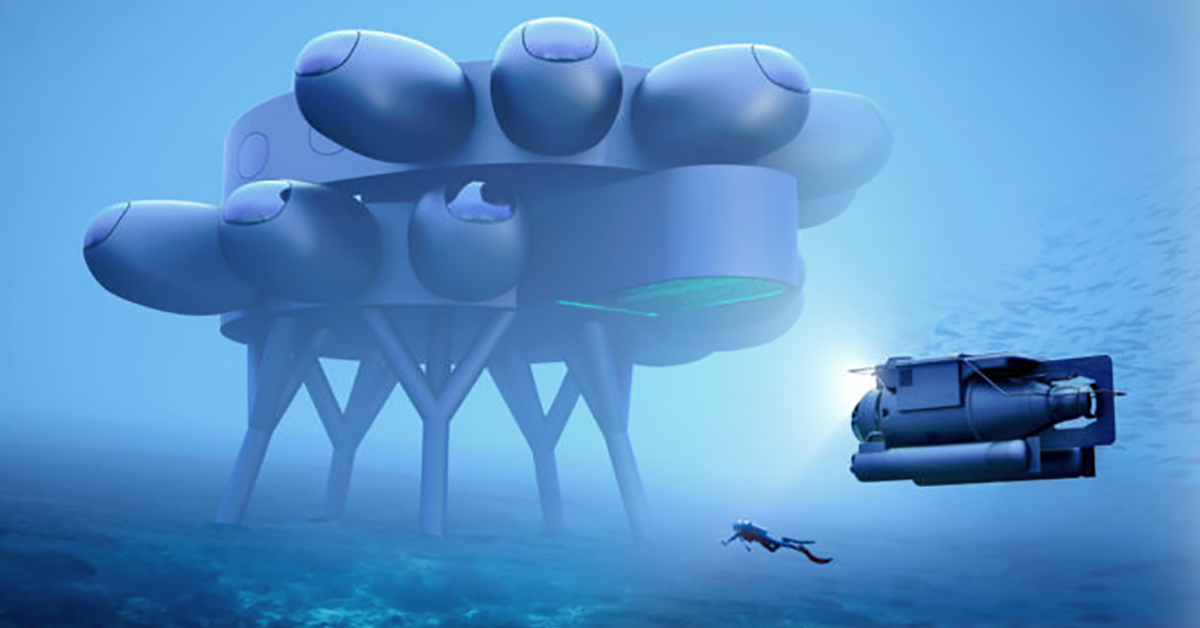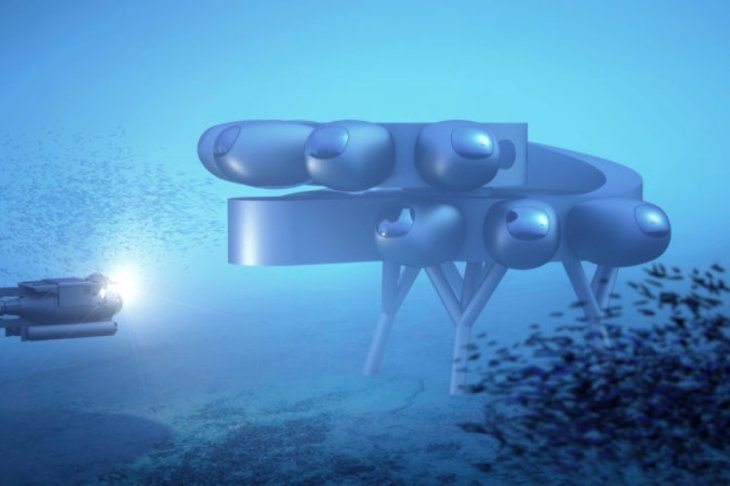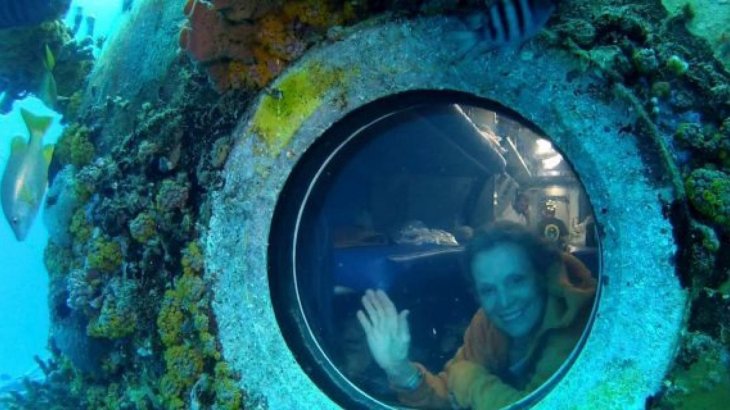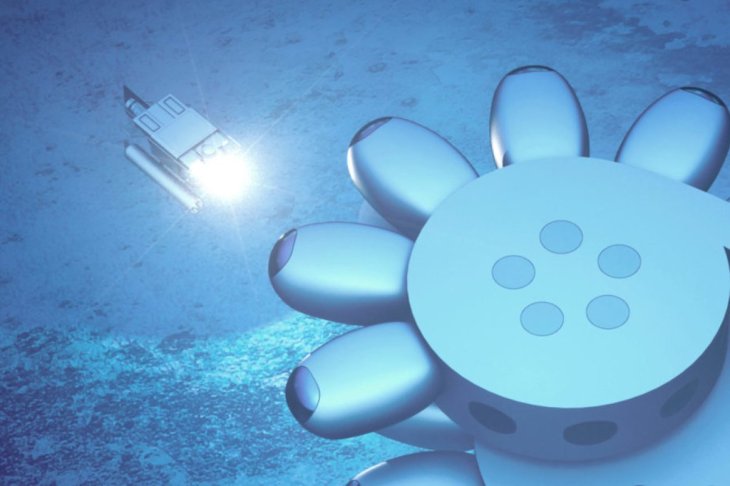World's Largest Underwater Research Station For Ocean Exploration Unveiled, Hope To Be ISS's Aquatic Counterpart
Aadhya Khatri - Jul 25, 2020

This design is for ocean exploration and it takes inspiration from everything, from science fiction to Japanese pods
- NASA Reveals 20 Most Stunning Earth Images Taken From The ISS
- Crew Isolating Themselves As NASA Hunts For Air Leak On The ISS
- Why Does The ISS Need To Fire A Rocket Regularly To Stay In Orbit While Space Junk Just Floats?
Fabien Cousteau, an aquanaut, and Yves Béhar, an industrial designer are working to realize their ambition of building the world’s largest research and habitat station underwater.
What they have at this point is the Proteus, a modular lab measuring 1219 square meters underwater off the coast of Curaçao. The lab will serve as a research facility and also home to researchers and scientists to learn more about the ocean.
Take the shape of a two-story round structure held firmly on to the ocean floor by stilts, the protruding pods of Proteus house medical bays, personal quarters, laboratories, and places for divers to access the ocean floor called moon pools.

The whole structure draws power from the sun, the wind, and the ocean’s heat. It is also the first underwater structure to have a greenhouse for food growing and a facility for video production.
What the creators have in mind when they build Proteus is to turn it into the underwater version of the ISS (International Space Station), a place where nations and sectors (public and private) can collaborate for knowledge.
According to Cousteau, ocean exploration is more important than space exploration as it has a strong tight with human’s survival. The ocean supports life and was the cradle of life.
The design is Fabien Cousteau’s and Yves Béhar’s latest achievement to realize their ambition. As stated by Cousteau, we might have to wait for three more years for Proteus to be installed as the COVID-19 pandemic has caused the project to be delayed.
Left Undiscovered
While 71% of our planet is covered by the ocean, NOAA (National Oceanic and Atmospheric Administration) projected that we have known about merely 5% of and mapped around 20% of the seas.
As space exploration and the ISS usually get more attention from the public, Cousteau puts hope on Proteus to draw some more to its underwater counterpart.

What comes next for the duo is a network of aquatic research facilities across different oceans to warn us of hurricanes and tsunamis. These research hubs are expected to be the pioneer in robotics, energy, and sustainability.
Having an underwater facility means scientists are able to dive continuously without stopping to decompress in between, much like what we have with the ISS where astronauts can spend months conducting experiments in space.
Before Proteus, the world’s only aquatic habitat for scientists is the Aquarius, a Florida-based 121 square meters facility. Costeau spent 31 days there back in 2014.

The station was designed in 1986 and owned by NOAA. 2013 saw Aquarius saved by Florida International University after NOAA no longer has government funding.
Family tradition
Cousteau’s family has a long tradition of ocean exploration. His father is Jean-Michel Cousteau. A filmmaker and his grandfather is Jacques-Yves Cousteau, co-founder of Aqua-Lung.
Proteus is the joint project of Fuseproject, Béhar's design firm, and the FCOLC (short for Fabien Cousteau Ocean Learning Center). Other partners include the Caribbean Research and Management of Biodiversity Foundation, Rutgers University, and Northeastern University.
While his work focuses on ocean exploration, he said he was also interested in space as well. In fact, these two endeavors share some similarities in nature. First, both of them require explorers to spend time in isolation in an extreme condition.
This is why Béhar designed the facility to have recreation quarters and windows to promote wellness.
According to Béhar, his firm has experience in designing for small environments so they are plenty able to apply that experience to create a facility with comfort in an extreme and isolated environment. However, he admitted that the ocean was different from most of his previous projects.
He said what they wanted to convey with the design is a futuristic and inspiring vibe. To achieve that, they have looked at everything, from Japanese pods to modular housing. The structure itself is inspired by how coral polyps look.

They also researched similar structures like Aquarius. The duo said these research facilities were small and purposely built so they have many limitations. However, they serve as the foundation for Proteus
Diving ahead
The project is receiving funding from the private sector however the duo is looking forward to having further investment. Another source of income for it is lease contracts with academic institutions and government agencies.
To draw the public in, Cousteau plans to offer updates on what is happening with the station via AR/VR content and live streams.
He hints at the possibility of the public having access to Proteus’s findings and ocean exploration process. He also shared that their mission was to turn complicated science matters into something people can understand and love.
>>> Scientists Found A Giant Squid Deep Down The Ocean, And Here's How It Looks
Featured Stories

Features - Jul 01, 2025
What Are The Fastest Passenger Vehicles Ever Created?

Features - Jun 25, 2025
Japan Hydrogen Breakthrough: Scientists Crack the Clean Energy Code with...

ICT News - Jun 25, 2025
AI Intimidation Tactics: CEOs Turn Flawed Technology Into Employee Fear Machine

Review - Jun 25, 2025
Windows 11 Problems: Is Microsoft's "Best" OS Actually Getting Worse?

Features - Jun 22, 2025
Telegram Founder Pavel Durov Plans to Split $14 Billion Fortune Among 106 Children

ICT News - Jun 22, 2025
Neuralink Telepathy Chip Enables Quadriplegic Rob Greiner to Control Games with...

Features - Jun 21, 2025
This Over $100 Bottle Has Nothing But Fresh Air Inside

Features - Jun 18, 2025
Best Mobile VPN Apps for Gaming 2025: Complete Guide

Features - Jun 18, 2025
A Math Formula Tells Us How Long Everything Will Live

Features - Jun 16, 2025
Comments
Sort by Newest | Popular